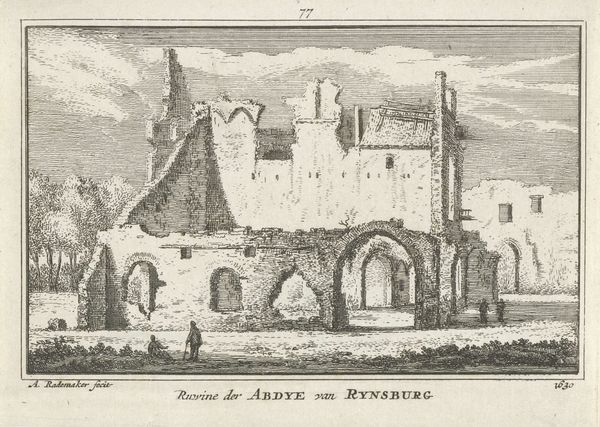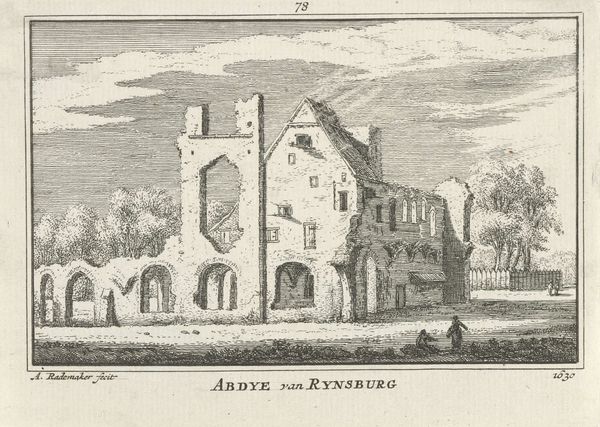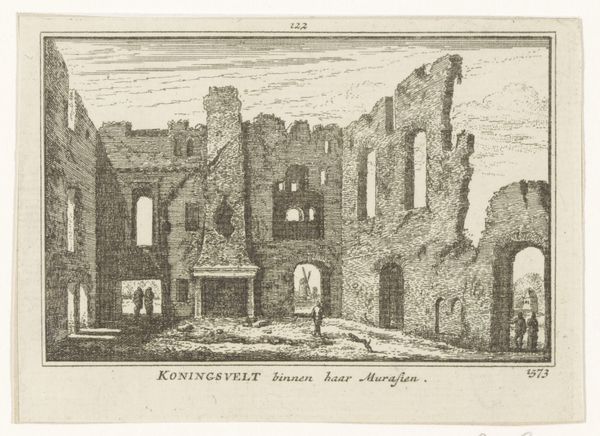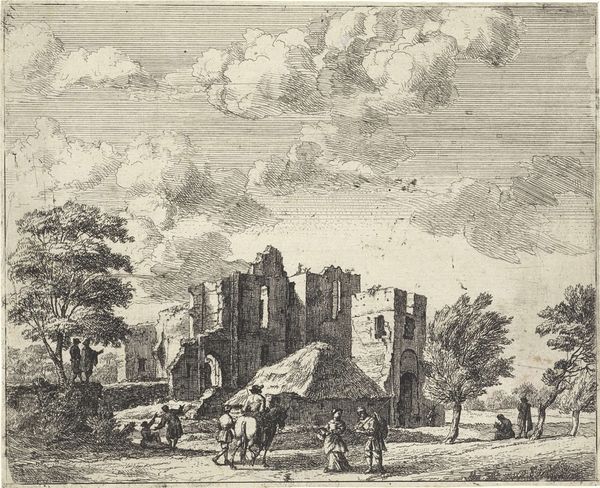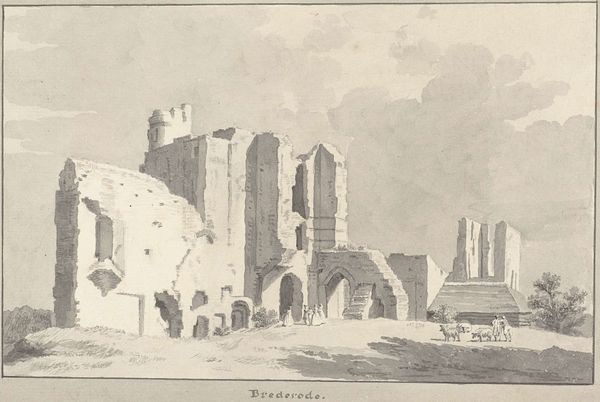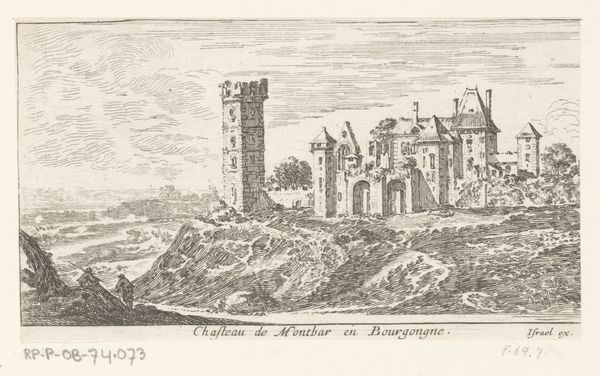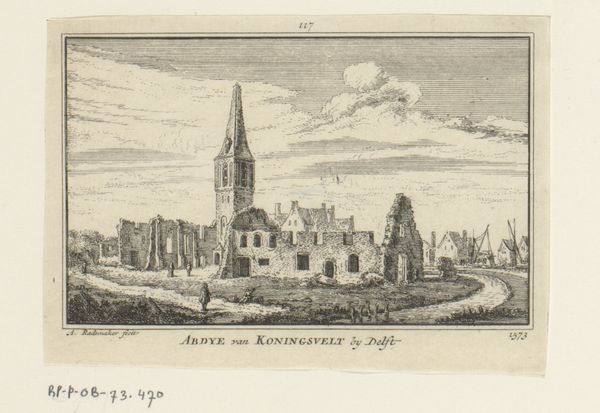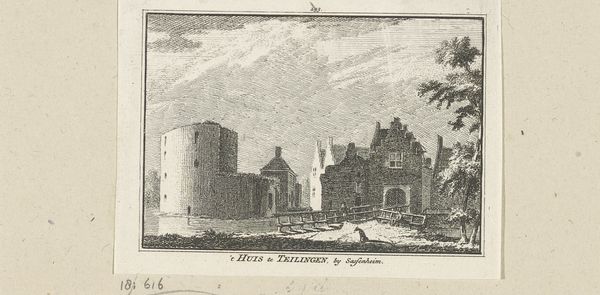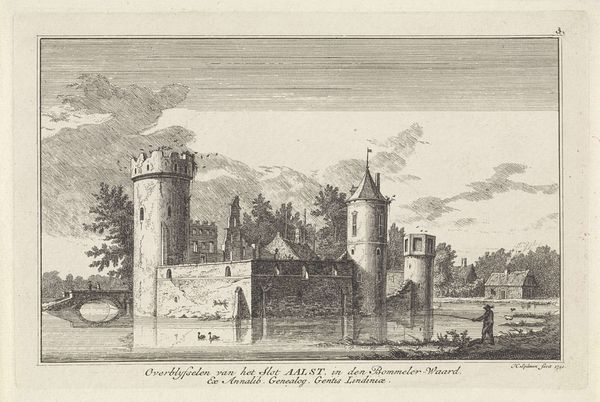
drawing, print, etching, engraving
#
drawing
#
baroque
# print
#
etching
#
landscape
#
line
#
history-painting
#
engraving
Dimensions: height 80 mm, width 115 mm
Copyright: Rijks Museum: Open Domain
Curator: This etching by Abraham Rademaker, titled "View of the Ruin of the Abbey at Rijnsburg, 1631," though created between 1727 and 1733, presents us with a stark depiction of a historic landmark. What’s your initial take on it? Editor: My first impression is one of melancholy. The ruins, rendered in stark lines, evoke a sense of loss and the relentless passage of time. The almost clinical rendering drains the structure of life. It's interesting that the ruins themselves almost serve as a figure against the almost purely rendered sky, demanding attention. Curator: Indeed, the etching style, characterized by precise lines, typical of the baroque style, invites us to contemplate the social and political implications embedded within this ruin. Rijnsburg Abbey was of great importance – its location allowed for enormous political power as it allowed one to control waterways coming into Holland. Depicting it in ruin highlights questions of power, decay, and the shifting tides of fortune, wouldn’t you agree? Editor: Absolutely. The decaying structure becomes a potent symbol of institutional vulnerability and change over time. I'm also curious about the people in the scene. The scale seems off compared to the large ruin, like Rademaker did this intentionally to highlight their insignificance in contrast to the crumbling religious and political construct towering over them. I'm sure there are class connotations here too... Curator: Yes, the small figures do add an interesting human dimension, underscoring both the Abbey's historical weight, and also, potentially, a note about land and power in the eighteenth century – were they simply passersby, or did they have a connection, perhaps even a fraught one, to the land and what it represents? What did it mean to encounter such powerful entities in a state of disrepair? And how can that influence our understanding of these dynamics in contemporary society? Editor: I find myself returning to the deliberate choice of presenting the Abbey's degradation in such stark terms. It's not romantic; it's almost journalistic, pushing us to engage with the complex and often painful aspects of institutional failure, class relations, and power structures across time, which are, unfortunately, highly applicable still today. Curator: Precisely. The etching invites viewers to recognize not just a historical landmark but also the enduring influence of these structures and the historical and cultural circumstances that allowed their existence, which certainly demand a contemporary socio-political approach. Editor: Rademaker's Rijnsburg Abbey leaves us with questions not of aesthetics, but the more difficult questions of power and purpose. Curator: Well said; its value lies in this continued cultural pertinence across history.
Comments
No comments
Be the first to comment and join the conversation on the ultimate creative platform.
